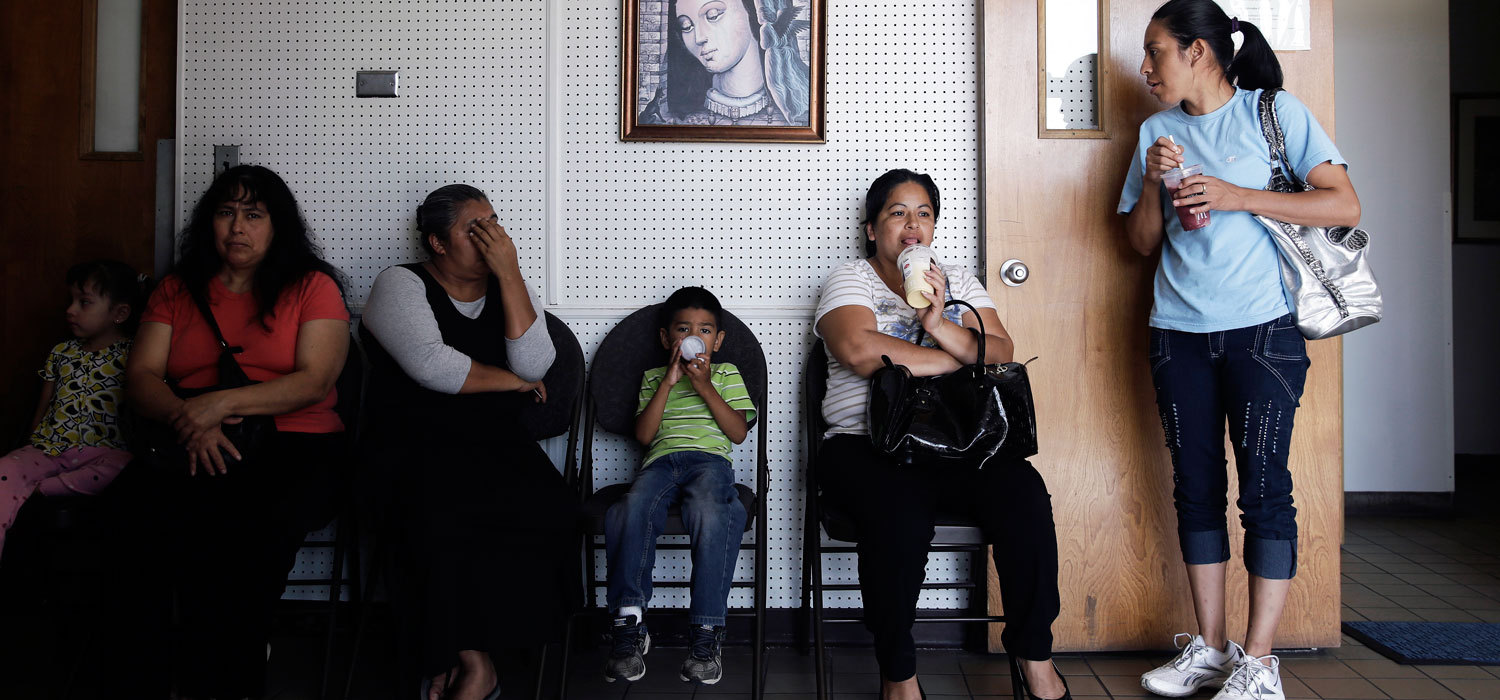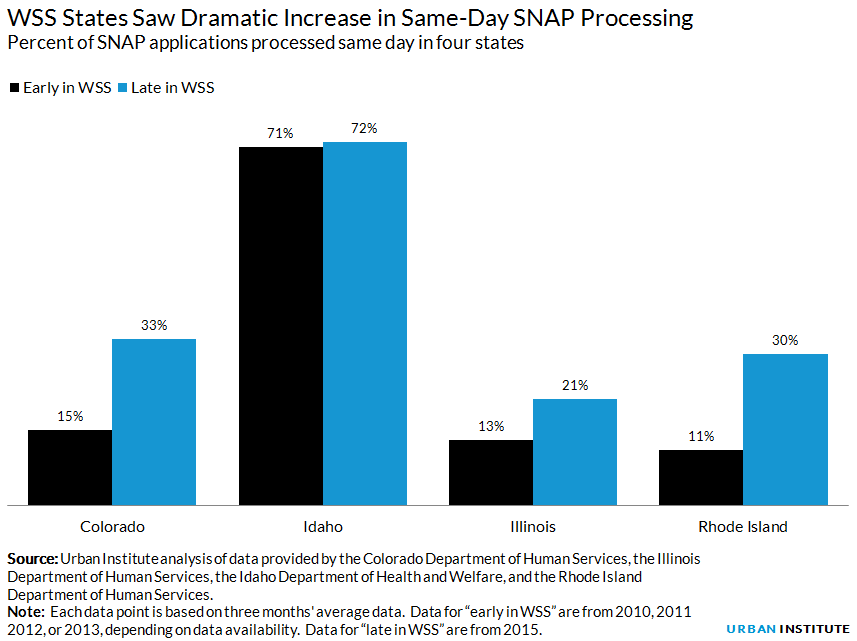
Applying for Medicaid, child care assistance, or other work supports can be burdensome. Clients often have to wait in long lines, show the same documentation to different caseworkers, and make follow-up visits to access and keep the benefits for which they are eligible. What can states do to improve the delivery of work support benefits? How can public agencies modernize their technology systems, program policies, and business processes to better serve working families?
Six states spanning the country and the political spectrum—Idaho, Illinois, Colorado, North Carolina, South Carolina, and Rhode Island—spent the last five years wrestling with these questions as part of the foundation-funded Work Support Strategies (WSS) Initiative. Emerging findings from Urban’s evaluation of WSS provide insights into what public agencies can do to improve the efficiency and effectiveness of their public benefit delivery systems.
Upgrading technology systems: Upgrading existing technology systems, including the large computerized eligibility systems through which workers determine eligibility for benefits, manage cases, and store case records, is one obvious way to modernize service delivery.
All six WSS states adopted new integrated eligibility systems or upgraded existing ones to improve program integration and customer access. The Affordable Care Act provided important funding for these changes but also imposed short time frames for implementation. Upgrading eligibility systems was a monumental undertaking, and all six states had growing pains, particularly when new technology did not work as expected or local workers needed more training and time than anticipated to learn the new system. But even as they worked through these implementation challenges, state officials spoke positively about how the new systems were, or soon would be, making a measurable difference in customers’ lives.
Streamlining policies: The WSS states also made several policy changes to streamline family access to work support programs, including reducing unnecessary verification requirements . Simultaneously, they sought to align policies across medical assistance, food assistance, cash assistance, and child care programs to reduce administrative burdens on families that qualify for more than one program. For example, states established processes for cross-program review of new policies, aligned the length of benefit eligibility so families could renew benefits for two or more programs at the same time, and used electronic data to auto-enroll Supplemental Nutrition Assistance Program (SNAP) recipients in Medicaid. By streamlining and aligning policies, or as one state put it, “reducing duplicative requests for the same paperwork,” states found they could improve outcomes “for both county workers and clients.”
Improving business process: All six WSS states also made changes to their business processes, updating their methods for greeting customers, accepting applications, making eligibility determinations, and processing changes and renewals. Frontline workers and supervisors worked with business process specialists to map out the current work flow, identify inefficiencies, and test new ways of organizing the work. As a result, states changed the lobbies in local offices, reallocated work across the workforce, and made other changes to streamline and simplify processes.
One striking result of the various changes states made was a dramatic increase in the number of families that received benefits the same day they applied. The percentage of SNAP applications with same-day service nearly doubled or tripled in Colorado, Illinois, and Rhode Island (from about 10 to 15 percent of applications to 20 to 33 percent), and increased marginally in Idaho, which did same-day service for 70 percent of SNAP applications in 2010, before WSS began.

Each area of change—technology, policy, and business process—required substantial effort by the WSS states and was generally the focus of a special team or contract (e.g., an interagency policy work group, a major contract with an IT vendor, or a contract with a business process vendor). Yet one of the strengths of WSS was that reforms in all three areas were made over the same five years, interacting in positive ways to help states better support working families. A common finding across the three WSS evaluation reports released March 29 was the interrelationship of technology upgrades, policy changes, and business process improvements:
- Building a new eligibility system provided a natural opportunity to simultaneously review policy rules and build new cross-program verification procedures that had not been possible in the old legacy computer system.
- New policies on application processing times and reduced documentation required from clients set a good foundation for business process improvements.
- Technology improvements, including the integrated eligibility systems, document scanners, and lobby management software, facilitated business process updates.
As other health and human service agencies seek to upgrade their benefit delivery systems and improve services to families, they should be aware of the need to make interrelated changes in technology, policy, and business process.
Tune in and subscribe today.
The Urban Institute podcast, Evidence in Action, inspires changemakers to lead with evidence and act with equity. Cohosted by Urban President Sarah Rosen Wartell and Executive Vice President Kimberlyn Leary, every episode features in-depth discussions with experts and leaders on topics ranging from how to advance equity, to designing innovative solutions that achieve community impact, to what it means to practice evidence-based leadership.